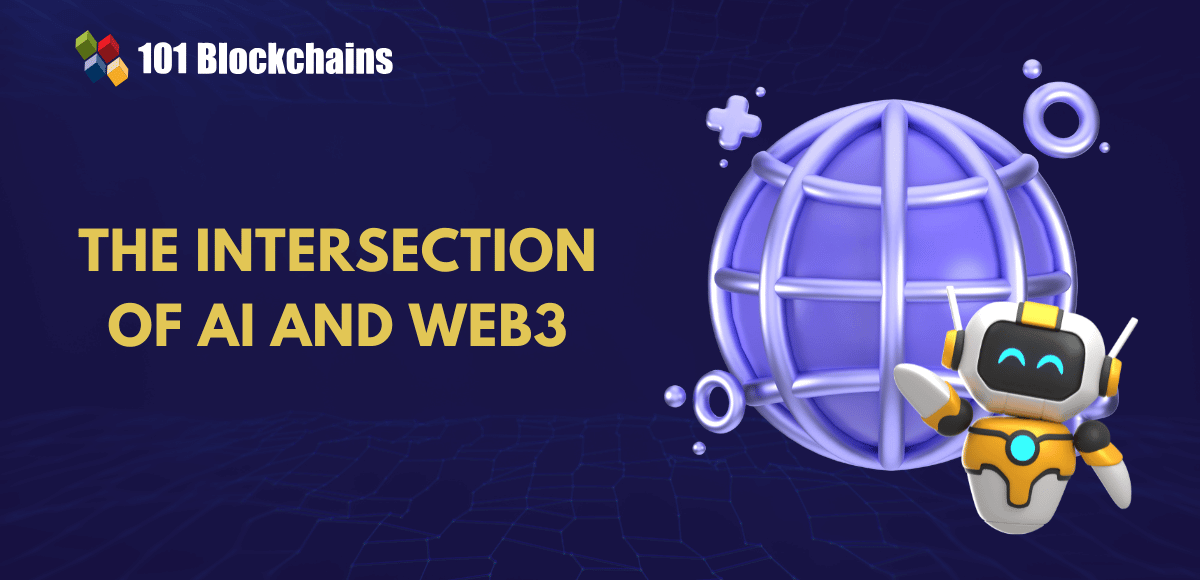Learn how blockchain truly works, master key definitions, and uncover what makes smart contracts so "smart." Dive into the fundamentals, gain valuable insights, and start your blockchain journey today!

- Web3
Georgia Weston
- on September 07, 2022
The Ultimate Web3 Cheat Sheet
The popularity of web3 reached new heights in 2021 as decentralized web emerged as one of the top priorities for businesses. Development for the new generation of the web has caught everyone’s attention for many reasons. For starters, web 3.0 has completely changed the perception of data ownership. A reliable web3 cheat sheet can help you uncover the essentials required for understanding web3 concepts and their applications.
The simple explanation for complicated web3 terms and concepts could help in setting the foundation to build the new version of the internet. Can we really expect another version of the internet? The following cheat sheet helps you uncover basic explanations for different focal questions related to web3 technologies. You can use the cheat sheet to develop a better impression of what web3 is and what it could achieve.
Web3 Cheat Sheet: 15+ Web3 Questions You Should Know

Please include attribution to 101blockchains.com with this graphic. <a href='https://101blockchains.com/blockchain-infographics/'> <img src='https://101blockchains.com/wp-content/uploads/2022/09/Web3-Cheat-Sheet-1.png' alt='Web3 Cheat Sheet='0' /> </a>
What is Web3?
The first thing in a cheat sheet for web3 would focus on a detailed overview of web3 explained clearly. During the first phase of the internet, it served as a platform where publishers could create content while users could consume it. Gradually, web2 came to the forefront with massive growth in social networks and web apps.
As a result, it could help almost anyone in creating, sharing and engaging with content. Now, web3 is the next generation of the internet with a stronger emphasis on openness and transparency. Web3 is capable of ensuring seamlessly intertwined digital experiences for users without relinquishing ownership and control over their data.
Learn the fundamentals, challenges and use cases of Web3.0 blockchain from the E-book: AN INTRODUCTION TO WEB 3.0 BLOCKCHAIN
What is the Necessity of Web3?
The most important highlight in a web3 dictionary would refer to the possible reasons underlying the rise of web3. The comparatively new nature of web3 makes it difficult to believe the possibilities for a new version of the internet. You must note that the new design introduced by web2 included some glaring pitfalls. Web2 offered the foundation for many big and transformative changes in the way users experienced the internet. Some of the prominent tech companies such as Apple, Meta and Google made their mark in the industry during web2 era.
However, almost all of them have been using user-generated content or UGC to engage different customers. User-generated content from different platforms with unique digital profiles for each user has created a huge treasure trove of data. Web2 companies misuse user-generated content by selling it without user permission. There is no way you can figure out what companies do with your personal data on the internet. Therefore, web3 becomes necessary for solving the issues with compromises in user data.
Curious to develop an in-depth understanding of web3 application architecture? Enroll Now in Web3 Application Development Course!
What Are the Principles Which Define Web3?
Most of the guides to learn web3 would showcase it as the next representation of the internet, based on blockchain technology. In addition, some of the accounts of web3 associate it with token-based economics. On the other hand, the core principles underlining web3 would include decentralization, autonomy and transparency. Each principle serves vital insights for the basic traits you can identify with web3.
Decentralization implies freedom from central intermediaries such as the tech companies which own different platforms. Web3 removes the concerns of centralization and does not allow any specific organization or complete individual control over user-generated content.
Transparency is another highlight of the web3 directory of terms as an important highlight among core principles. Blockchain technology provides the assurance of transparency as all the users would work on decentralized apps or dApps and peer-to-peer networks. As a result, all the details of transactions and information exchange in web3 can be found within open and unmodifiable databases.
The final core principle of web3 points at autonomy, which puts users in control of their data and identity. Autonomy in web3 would ensure that each user has complete control over deciding how their data would be collected and used.
Curious to gain more insights and clarity regarding the potential of web3? Check the detailed guide Now on Frequently Asked Questions About Web3
What is The Role of Blockchain Technology in Web3?
The impact of blockchain technology on web3 trends is quite significant, especially in terms of the tectonic shifts it has introduced recently. The overview of web3 examples would show you how blockchain technology could serve as an important component in web3 applications. It basically offers the three defining principles of web3 decentralization, transparency and autonomy. Blockchain can help users find out more details about the brands they agree to share their data with and the type of data they want to share.
Build your identity as a certified blockchain expert with 101 Blockchains’ Blockchain Certifications designed to provide enhanced career prospects.
What Is The Significance of Tokens in Web3?
Tokenization is one of the explicitly evident traits of the web3 ecosystem, especially for the scope of rewards. The facility of tokens as a reward mechanism could help in understanding how NFTs and fungible crypto tokens have become popular digital assets. At the same time, tokenized rewards could also help to fuel the excitement of users for web3. A web3 cheat sheet would help you understand how tokens can capitalize on blockchain to ensure numerous benefits.
First of all, you have the assurance of immutability, which is a permanent and unmodifiable database with blockchain. The tokens also feature flexible validation through blockchain for verifying legitimacy of transactions. Disintermediation or removal of intermediaries between users and advertisers can ensure the benefits of decentralization. At the same time, tokens in web3 also offer flexibility of use through easy transfer mechanisms and strong security mechanisms.
How is Ethereum Important for the Web3?
Ethereum is one of the must-have additions in a web3 dictionary for its functionalities in development of decentralized applications. The blockchain network is capable of serving programming benefits rather than serving only as a cryptocurrency network. It enables developers to use the Ethereum blockchain for creating, testing and deploying decentralized applications.
The Ethereum stack is the most popular tech stack for anyone interested in web3 technologies. The core components in the Ethereum stack can provide a clear image of the possible ways for interactions between software applications and Ethereum blockchain. Each layer of the Ethereum stack can help in understanding the mechanisms for integration of Ethereum with software projects.
What Are the Important Components of Ethereum Tech Stack?
The web3 revolution has been thriving largely on the back of Ethereum blockchain. Ethereum serves smart contract programmability, which helps developers create unique smart contracts for different use cases. The Ethereum blockchain includes multiple layers in its tech stack, such as the Ethereum Virtual Machine, smart contract, Ethereum nodes and Ethereum client APIs. In addition, user-facing applications, such as web and mobile apps, are also an integral part of the Ethereum tech stack.
EVM serves as the runtime environment for Ethereum smart contracts, which are basically code scripted in particular programming languages. The Ethereum nodes are the fundamental units of Ethereum tech stack and are responsible for security of network and data accuracy. Ethereum client APIs are convenience libraries that help applications in connecting to the Ethereum blockchain.
Excited to learn the basic and advanced concepts of ethereum technology? Enroll Now in The Complete Ethereum Technology Course
What is The Significance of Smart Contracts in Ethereum?
Smart contracts are basically executable code fabricated in particular programming languages, which are automatically compiled to EVM bytecode. Smart contracts are an integral aspect of web3 development as they support integration of new functionalities in blockchain-based applications. Web3 applications can use smart contracts as something more than open source libraries.
The use of smart contracts in any web3 directory would also highlight their capabilities as open API services. Smart contracts offer public functions for users and applications without the need for permission. Any application could facilitate integration with deployed smart contracts to ensure desired functionalities. The power of smart contracts for introducing custom functionality on Ethereum blockchain can provide the desired flexibility for fuelling the web3 revolution.
Curious to understand the complete smart contract development lifecycle? Enroll in Smart Contracts Development Course Now!
What is a Non-Fungible Token?
The term NFT or non-fungible token has been associated with the web3 ecosystem quite frequently. NFTs have evolved as one of the notable highlights of the tokenized economy in web3. For example, tokens can offer the advantages of flexibility and seamless transfer of value in the web3 ecosystem. However, NFTs have a different advantage in the form of proof for ownership and representation of assets with security on blockchain networks.
You would find many web3 examples pertaining to NFTs with a good amount of success in recent times. The NFT market is slowly growing up into a massive ecosystem with many types of NFT projects taking the front seat. Non-fungible tokens satisfy the core principles of web3 and have a significant role in defining the future of web3.
Aspiring to Become a Certified NFT Expert? Enroll in Certified NFT Professional (CNFTP) Course Now!
What are Decentralized Applications?
Decentralized applications are another significant highlight in almost every guide on web3. The term itself explains a lot about their role in web3 as they are the practical foundations of the web3 ecosystem. Blockchain-based applications with smart contract functionalities are decentralized apps or dApps, also known as web3 apps.
How Is the Metaverse Related to Web3?
The relationship between metaverse and web3 is also another crucial highlight for learners interested in web3. Metaverse is an open and shared virtual world with various virtual spaces for accessing different types of services and solutions. With blockchain as the foundation, the metaverse is one of the most innovative web3 examples with a lot of potentials.
An overview of the proposed vision and design of the metaverse shows that it aims to present a tangible interpretation of what a web3 community would look like. The world of metaverse would allow interoperability between different applications and virtual spaces while enabling total control for the users. Furthermore, the technical foundation underlying the metaverse, such as AI, machine learning and IoT, could also provide a powerful infrastructure for web3.
Aspiring to Become a Certified Metaverse Expert? Enroll in Certified Metaverse Professional (CMP) Certification Course Now!
Is Web3 All about Decentralization?
The notable discussions revolving around web3 suggest that decentralization is not the only benefit of web3. It is also focused on making the internet more semantic or understanding of the user’s requirements. Voice assistants can be an easy place to learn web3 projects in the initial stages. The voice assistant based on a blockchain network could collect data from external sources and deliver it to you securely. At the same time, the voice assistant must constantly improve by learning from each interaction to improve its functionalities.
Web3 would also focus on enabling the internet to be more responsive to human language. The existing majority of content on websites and social media is static or user-generated. However, the formats for publishing the content have been restricted to comply with a larger audience base. On the contrary, web3 would provide an improved space for understanding people as individuals and with distinct needs.
What is The Advantage of Web3 Over the Previous Versions?
The introduction of web3 has been practically focused on resolving the issues with the previous versions. Web3 does not have a central authority and could not involve allocating control to any particular individual or company. Almost every web3 cheat sheet should show you that web3 is not subject to risks of censorship.
In addition, web3 could facilitate better and more intelligent use of the information by leveraging the growing number of digitally connected devices. The transparency of web3 and use of technologies such as AI systems for customer data targeting also indicate clear advantages for web3 over the previous web versions. In addition, websites and web applications could provide a better customer support experience with personalized services.
Get familiar with the terms related to Web 3.0 with Web 3.0 Flashcards
Is Web3 a New Type of Crypto?
No, Web3 is a new variant of the internet, and it is obviously associated with cryptocurrencies due to the similarities between them. Even if cryptocurrencies can become a part of the web3 ecosystem, web3 does not qualify as an independent cryptocurrency.
What is the Role of Web3 for the Future?
The outlook of different web3 examples shows the emphasis on transparency, decentralization, security and autonomy. Web3 would combine all these to ensure that users control what they use and share with anyone on the internet. The removal of intermediaries is a clear indication of simplifying conventional business models into new and efficient structures.
Web3 would bring freedom and flexibility for users to make the most of digital services. Most important of all, web3 would offer the ideal foundation for control over digital identity data. Therefore, web3 can define the basics for many applications, which would take the web3 industry forward.
What Are the Security Risks of Web3?
The security risks associated with web3 are also of critical concern. Web3 relies on cryptography mechanisms for security, albeit with few flaws in the vulnerabilities. The common types of attacks, such as lack of access control or unfiltered variables, could affect web3 users by considerable margins. However, the basic principles underlying web3 provide the assurance for security of user data. As a matter of fact, security is always about the shared responsibility of web3 and the users. For example, you should never compromise your private keys.
Build your fluency in advanced technologies as a web3 expert, Enroll Now in world leading Web3 Expert Career Path
Final Words
The web3 cheat sheet explained some of the basic questions about web3. The cheat sheet can help you build a comprehensive impression of how web3 can influence a massive revolution in technology. You can notice the examples of different types of technologies associated with web3, such as NFTs, metaverse and many others.
At the same time, the important components in the architecture of web3, such as smart contracts, EVM, and Ethereum tech stack, also provide a brief overview of how web3 would shape up. The cheat sheet also reflected on the possibilities of risks in security for web3. Learn more about web3 and explore dynamic career opportunities in the field now.
*Disclaimer: The article should not be taken as, and is not intended to provide any investment advice. Claims made in this article do not constitute investment advice and should not be taken as such. 101 Blockchains shall not be responsible for any loss sustained by any person who relies on this article. Do your own research!







